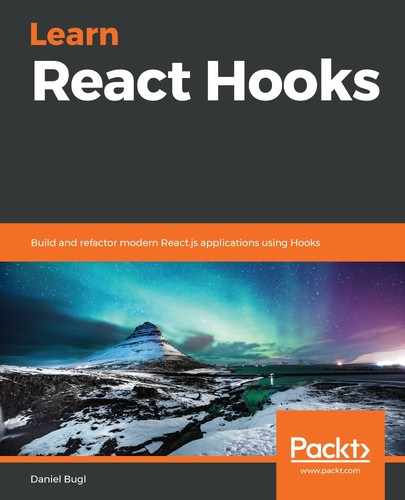There are a number of text conventions used throughout this book.
CodeInText: Indicates code words in text, folder names, filenames, file extensions, pathnames, dummy URLs, and user input. Here is an example: "JavaScript classes provide a render method, which returns the user interface (usually via JSX)."
A block of code is set as follows:
class Example extends React.Component {
When we wish to draw your attention to a particular part of a code block, the relevant lines or items are set in bold:
constructor (props) {
super(props)
this.state = { name: '' }
this.handleChange = this.handleChange.bind(this)
}
Any command-line input or output is written as follows:
> npm run-script build
Bold: Indicates a new term, an important word, or words that you see onscreen. Here is an example: " Throughout this chapter, we are also going to learn about JSX, and new JavaScript features that have been introduced in ES6, up to ES2018."
In blocks of code, we use bold formatting to highlight changes in the code. Usually, we highlight new code using bold. If specified, we might also indicate which parts of code should be deleted by using bold formatting.
